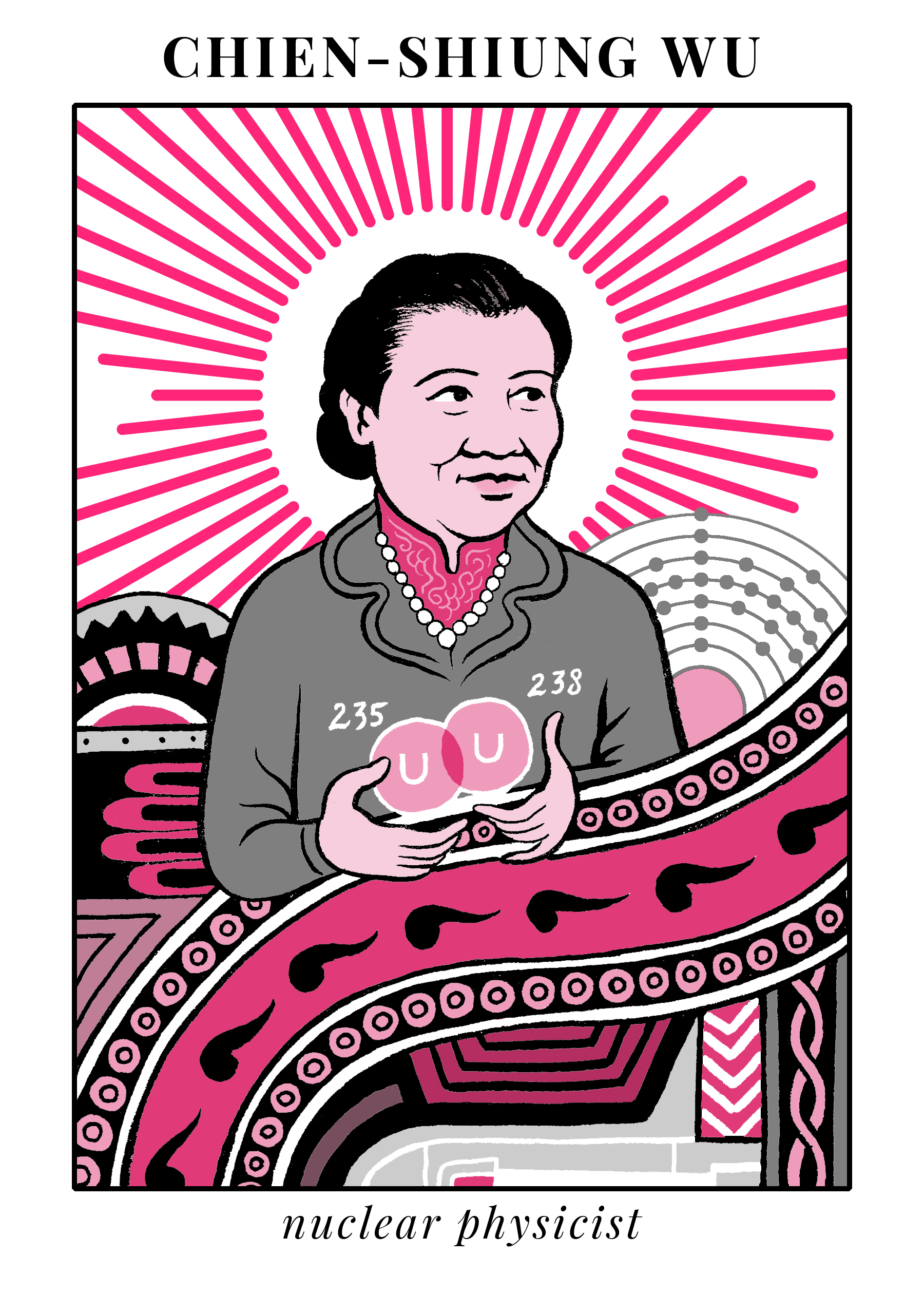Meet Chien-Shiung Wu, the nuclear physicist who developed revolutionary experiments
She changed how we understand fundamental laws that move both quarks and planets
In 1936, a young physics graduate from China boarded the SS President Hoover, waved goodbye to her parents, and began a weeks-long journey to the United States. Her final destination was to be Ann Arbor, where she planned to start her PhD in physics at the University of Michigan. Little did Chien-Shiung Wu know at that moment that she would never see her parents again, that she wouldn’t study at Michigan, and that she would go on to work on The Manhattan Project and become one of the most preeminent experimental nuclear physicists of all time.
%2C_Y.K._Lee%2C_and_L.W._Mo.jpg)
Wu and her colleagues at Columbia University
Smithsonian Institution Archives
1.She worked on the Manhattan Project
Though she was planning to attend the University of Michigan, Wu ended up elsewhere. She eventually decided to work at the more women-friendly UC Berkeley under the partial direction of Ernest Lawrence, a nuclear scientist who won the Nobel Prize in 1939, invented the cyclotron particle accelerator, and founded the Lawrence Berkeley National Laboratory and the Lawrence Livermore National Laboratory.
While at Berkeley, Wu researched beta decay and the production of radioactive isotopes, which led to her joining the Manhattan Project in 1944. As part of her work at Columbia University, she developed a process for separating uranium metal into isotopes U-235 and U-238. She once said that beta decay was, "like a dear old friend. There would always be a special place in my heart reserved especially for it.”
_in_1958.jpg)
Smithsonian
2.She performed a famous experiment during the holidays instead of visiting China.
Later in her career, Wu moved to Columbia University, where she conducted what became known as the “Wu experiment.” Physicists had long believed that nature had no preference for the direction of quantum particle spin, the property that gives everything from tiny quantum particles to large things like planets angular momentum. This was known as the Law of Conservation of Parity. Some of Wu’s colleagues at Columbia began to believe that nature might prefer left or right spin, and convinced Wu to setup an experiment to confirm their suspicions at the end of 1956.
As Wu later recalled, it was an opportunity too good to pass up, even though it meant skipping a vacation and the chance to visit China for the first time since she left:
"This was a golden opportunity for a beta decay physicist to perform a crucial test, and how could I let it pass? That Spring, my husband, Chia-Liu Yuan, and I had planned to attend a conference in Geneva and then proceed to the Far East. Both of us had left China in 1936, exactly twenty years earlier. Our passages were booked on the Queen Elizabeth before I suddenly realized that I had to do the experiment immediately, before the rest of the Physics Community recognized the importance of this experiment and did it first. So I asked Chia-Liu to let me stay and go without me. As soon as the Spring semester ended in the last part of May, I started work in earnest in preparing for the experiment."
She ended up doing her experiments in Washington, D.C. at the National Bureau of Standards, now known as the National Institute of Standards and Technology.
"Between experimental runs in Washington, I had to dash back to Columbia for teaching and other research activities. On Christmas Eve, I returned to New York on the last train; the airport was closed because of heavy snow. There I told Professor Lee that the observed asymmetry was reproducible and huge. The asymmetry parameter was nearly -1. Professor Lee said that this was very good."
Wu’s experiment confirmed that for weak nuclear interactions, nature is slightly left-handed. The finding stunned physicists around the world, who quickly repeated her work and confirmed her results.

Matteo Farinella
3.She gained recognition for her accomplishments, but she was left out of the Nobel Prize.
In 1957, less than a year after Wu's holiday experiment, Wu's colleagues who proposed the theory were awarded the Nobel Prize for upending the concept of parity. Wu was inexplicably not included in the prize. She was, however, later awarded the Wolf Prize in Physics for her contribution to the Standard model and the National Medal of Science for her work on beta decay.
Wu was also a barrier-breaker, as one of few women physicists in her time. She was the first woman president of the American Physical Society, and a recipient of the American Association of University Women Achievement Award. She retired in 1981 after an incredible career, upending our understanding of nuclear physics.
This is an updated version of an article originally published in 2017.